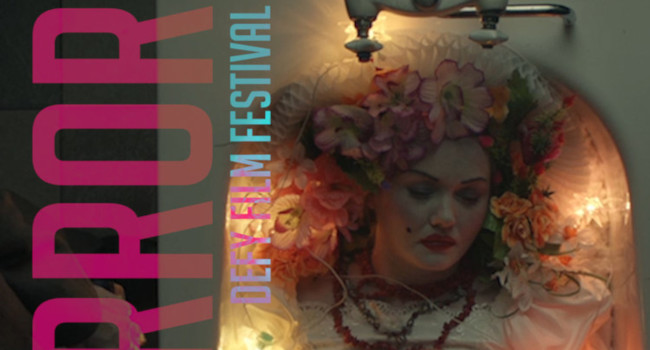The Defy Film Festival returns to Studio 615 in East Nashville this weekend. With that in mind I wrote this primer on experimental film for this week’s The Contributor. Pick up a paper from your neighborhood vendor!
What we talk about when we talk about experimental film
In the most general sense the term “experimental film” might apply to any movie lacking narrative. Cinematic storytelling is so ingrained in movie culture that even loose plots or slow scenes can find critics reaching for the “e” word. Of course, most experimental films ditch storytelling along with accepted limits on length and/or a radical re-imagining of editing, performance or use of effects etc.
If you want to watch experimental films in a theater setting they usually garner a few slots in film festivals where they can be divided up into categories like “experimental shorts” or “experimental animation.” The third annual Defy Film Festival happening this weekend in Nashville is like those weird little subcategories of movie programming blown-up into an entire two-day event all its own. This year’s festival includes movies by filmmakers from around the world, and it’s a great chance to see what’s happening at the far edges of cinema across the globe.
Anticipating this weekend’s festival I wrote these notes about what experimental cinema can be, and why you should care about it if you care about movies:
Size Matters
One of the biggest differences between experimental and narrative films can be length. Of course, many director’s early works are narrative shorts, but there are a number of reasons – including budgets and subject matter – why experimental movies are often short films. For example, Stan Brakhage created his “The Dante Quartet” (1987) by hand-painting every individual frame of his film. It took 6 years to create the movie which has a running time of 8 minutes. That said, experimental movies might also be extremely long: Andy Warhol’s “Empire” (1965) features one uninterrupted shot of the top of the Empire State Building. The movie runs for 8 hours and 5 minutes. You can expect 70 shorts screening at the Defy fest this weekend, but you’ll also find the chance to deep dive into 8 full length features as well.
Subjecting Cinema
When a filmmaker isn’t bound to storytelling there is nearly no limit to which subjects they might choose to film. Experimental moviemakers who are interested in exploring new techniques and effects might pick nearly anything or anyone to point their cameras at. Michael Snow’s “Wavelength” (1967) starts as a wide shot of a loft apartment that almost imperceptibly zooms-in over the course of 45 minutes on a photograph of the sea hanging on a wall. There’s more to it than that, but this movie is admired more for what it is more than what it’s about. Experimental films like “Wavelength” can make viewers call into question whether a film even has to have a traditional subject at all. This is one way that experimental films can open our eyes to the dogmas and assumptions that may inform mainstream narrative filmmaking. The result is that experimental film audiences are more literate viewers of moving images of all kinds.
Boundary Breaking
When filmmakers push their frames to the accepted edges of cinema they often find their efforts spilling over into other disciplines, resulting in works that are half movie and half something else. Chris Marker’s classic “La Jetée” (1962) was the inspiration behind 12 Monkeys (1995). Marker’s movie is almost entirely made-up of black-and-white still photographs, and I’d imagine it’s inspired just as many shutterbugs as movie directors. Hugh Welchman’s Loving Vincent (2017) is the first feature length film composed entirely of animated oil paintings. Audiences who’ve seen this Vincent van Goh biopic might leave the theater feeling they’ve spent the evening at an art museum. William K.L. Dickson and William Heise’s “Annabelle Serpentine Dance” (1895) is an early American silent short featuring a performer engaging in the eponymous dance wearing a voluminous, flowing skirt that shifts through a palette of colors thanks to the filmmakers’ pioneering hand-tinting effects. The film made for a thrilling theater experience before the 20th century, but today it reads like the kind of performance art document you’d find in a video installation in a gallery space. Watching experimental films often results in being exposed to the wider spectrum of the arts, and becoming more aware of the landscape of a culture as a whole.
The Defy Film Festival happens August 24 and 25 at Studio 615 in East Nashville. Go to www.defyfilmfest.com for a full schedule and tickets.
Please subscribe to my YouTube channel where I archive all of the videos I curate at Insomnia. Click here to check out more cinema posts.








